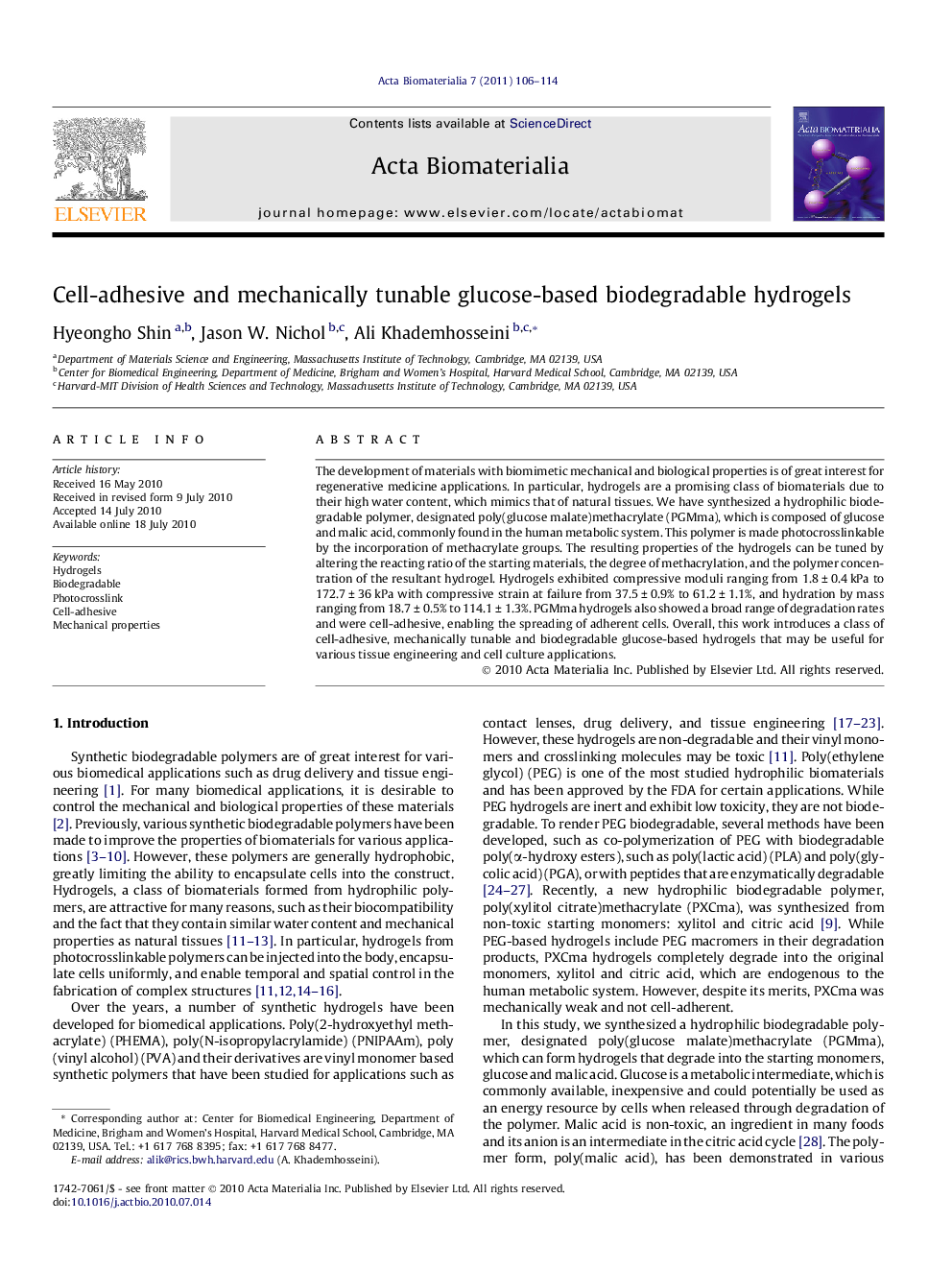| Article ID | Journal | Published Year | Pages | File Type |
|---|---|---|---|---|
| 1794 | Acta Biomaterialia | 2011 | 9 Pages |
The development of materials with biomimetic mechanical and biological properties is of great interest for regenerative medicine applications. In particular, hydrogels are a promising class of biomaterials due to their high water content, which mimics that of natural tissues. We have synthesized a hydrophilic biodegradable polymer, designated poly(glucose malate)methacrylate (PGMma), which is composed of glucose and malic acid, commonly found in the human metabolic system. This polymer is made photocrosslinkable by the incorporation of methacrylate groups. The resulting properties of the hydrogels can be tuned by altering the reacting ratio of the starting materials, the degree of methacrylation, and the polymer concentration of the resultant hydrogel. Hydrogels exhibited compressive moduli ranging from 1.8 ± 0.4 kPa to 172.7 ± 36 kPa with compressive strain at failure from 37.5 ± 0.9% to 61.2 ± 1.1%, and hydration by mass ranging from 18.7 ± 0.5% to 114.1 ± 1.3%. PGMma hydrogels also showed a broad range of degradation rates and were cell-adhesive, enabling the spreading of adherent cells. Overall, this work introduces a class of cell-adhesive, mechanically tunable and biodegradable glucose-based hydrogels that may be useful for various tissue engineering and cell culture applications.
